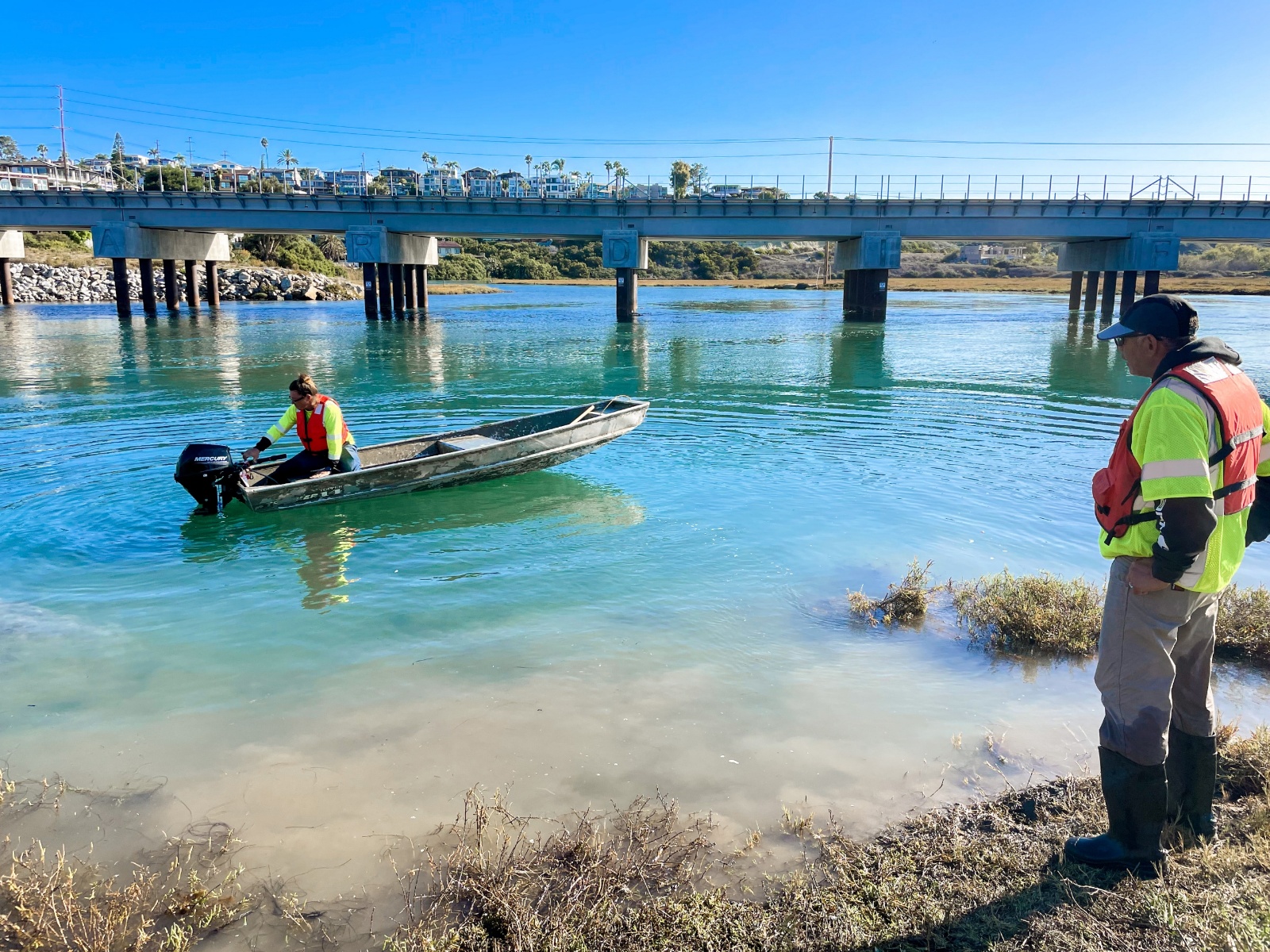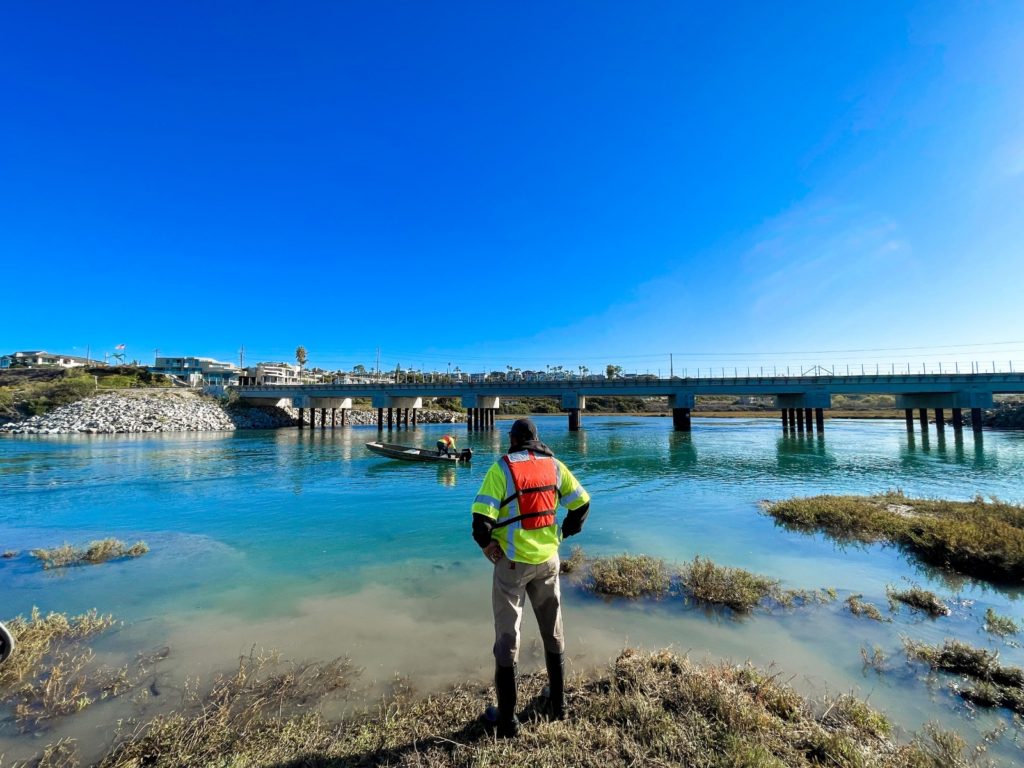San Elijo Lagoon Inlet Facing Possible Closure
Follow ( 0 Followers ) X Follow E-mail : * Follow Unfollow

As tar balls drift south from the Oct. 2 offshore oil pipeline leak in Huntington Beach, a Unified Command force is in place, led by the U.S. Coast Guard, in collaboration with California Fish and Wildlife Office of Spill Prevention and Response, National Marine Fisheries, and many other State and Federal agencies.
Working with Unified Command, Nature Collective’s Executive Director and Principal Scientist Doug Gibson will be the liaison for removing the environmental pollutants in San Elijo Lagoon Ecological Reserve.

Above: Nature Collective + Unified Command personnel are monitoring and removing tar balls within San Elijo Lagoon’s tidal channels.
Late last week, a temporary boom was installed at the inlet to San Elijo Lagoon to protect the estuary from any contaminants that found their way to the lagoon channels from the oil spill. A boom is a containment partition that floats on and extends above the water’s surface, with a “curtain” that sinks into the water to divert spills away from sensitive habitats.
The boom did not keep all of the contaminants out. Several tar balls, or blobs of petroleum, were discovered in the inlet, West Basin, and Central Basin. Tar balls are aquatic pollutants to the sensitive plant and animal species that live in the channels of San Elijo Lagoon.
This cleanup will occur over the next few days. You will see boats and divers deploying from the inlet area into the Central, East and West Basins. Once the cleanup is complete, we will continue to monitor the area for any additional impacts that this oil spill is causing on this area.
Follow ( 0 Followers ) X Follow E-mail : * Follow Unfollow
Follow ( 0 Followers ) X Follow E-mail : * Follow Unfollow